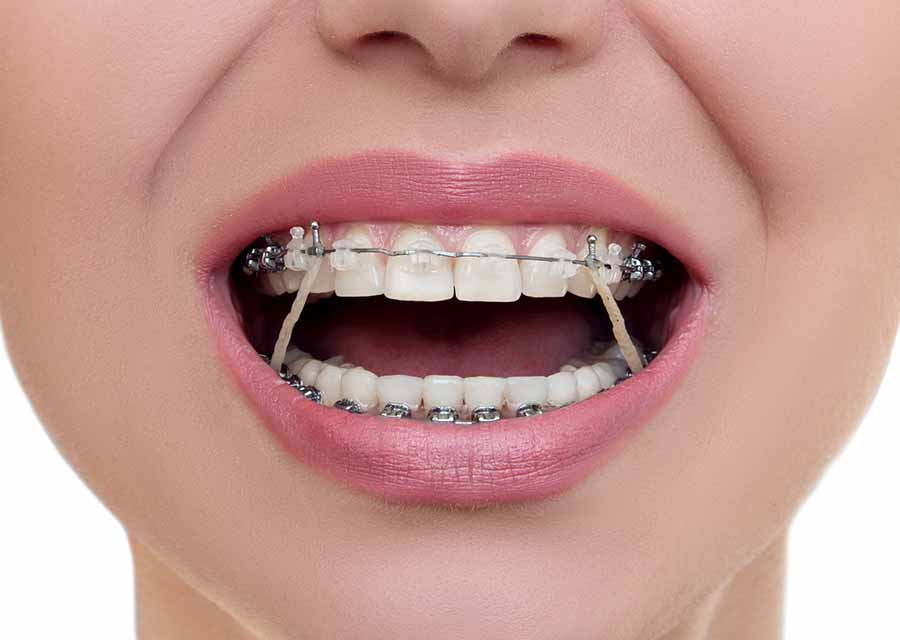Indicators on All Star Family Orthodontics You Should Know
Table of ContentsSome Known Facts About All Star Family Orthodontics.Things about All Star Family OrthodonticsAll Star Family Orthodontics Fundamentals ExplainedMore About All Star Family Orthodontics6 Easy Facts About All Star Family Orthodontics Described

At Advanced Orthodontics, we offer clients with a alternative treatment experience. In enhancement, we supply flexible therapy timetables, flexible payment alternatives and an enjoyable, pleasurable experience - orthodontist. Phone call ( 480) 357-4900 today for additional information and schedule a consultation.
An orthodontist is a dentist trained to diagnose, stop, and treat teeth and jaw abnormalities. Orthodontists function with individuals of all ages, from kids to adults.
Malocclusion, or misaligned teeth, can bring about dental concerns, consisting of dental cavity, gum tissue illness, and difficult or painful eating. However not everyone is birthed with straight teeth. If you have a negative bite or large rooms between your teeth, you may desire to seek advice from a dental expert focusing on orthodontic care.
All Star Family Orthodontics Fundamentals Explained
(Image Credit: DigitalVision/Getty Images) Orthodontists utilize taken care of and removable dental tools, like braces, retainers, and bands, to change the setting of teeth in your mouth. Orthodontic treatment is for dental problems, including: Jagged teethBite problems, like an overbite or an underbiteCrowded teeth or teeth that are as well far apartJaw misalignmentThe objective of orthodontic therapy is to enhance your bite.
A healthy and balanced bite ensures you can consume, chew, and speak correctly. While you might consider orthodontists as mostly for children or teenagers who need braces, they can correct oral troubles at any kind of age. Orthodontists participate in college, oral institution, and orthodontic school. After college graduation, they invest 2 or 3 years in an orthodontic residency program.
All orthodontists are dental experts, yet not all dentists are orthodontists. Orthodontic residency programs use extensive, concentrated direction for oral experts. They focus on 2 areas: Just how to effectively and safely move teeth How to appropriately direct growth in the teeth, jaw, and faceOnce an orthodontist has finished training, they have the choice to become board licensed - https://www.behance.net/lawrencepayne2.
More About All Star Family Orthodontics
Misalignment, or malocclusion, is one of the most typical factor individuals see an orthodontist. It is hereditary and is the outcome of size differences between the upper and lower jaw or in between the jaw and teeth. Malocclusion results in tooth overcrowding, an askew jaw, or uneven bite patterns. Malocclusion is typically treated with: Your orthodontist attaches metal, ceramic, or plastic square bonds to your teeth.
If you have just minor malocclusion, you might have the ability to utilize clear braces, called aligners, rather than typical dental braces. Some people require a headgear to aid move teeth right into line with stress from outside the mouth. After braces or aligners, you'll need to put on a retainer. A retainer is a personalized device that keeps your teeth in area.

You may require to see an orthodontist if you have: Crowding or not adequate area for every one of your teethOverbite, when your upper teeth come your bottom teethUnderbite, when your base teeth are too far forwardSpacing or concerns with gapsCrossbite, which is when your top teeth fit behind your bottom teeth when your mouth is closedOpen bite or a vertical space in between your front base and top teethMisplaced midline, when the center of your base and upper teeth don't line up Correcting an oral malocclusion can: Make biting, chewing, and speaking easierImprove the balance of our face and your total appearanceEase pain from temporomandibular joint problemsSeparate your teeth and make them less complicated to cleanse, helping protect against dental caries or cavities It's commonly a dental practitioner who first notices misaligned teeth during a regular test.
All Star Family Orthodontics for Dummies
Throughout your very first orthodontic consultation, you'll likely have: A dental examPhotos taken of your face and smileDental X-raysPanoramic (360 level) X-rays of your face and headImpressions to develop mold and mildews of your teethThese tests will help your orthodontist understand just how to wage your treatment. An orthodontist is a dentist that's had training to treat your teeth and jaw.
Orthodontists might carry out surgical treatment, exams,X-rays, - old bridge bracesand even more to aid you attain an extra comfy, healthier smile. An orthodontist is concentrated on your bite, so something like a broken tooth would be handled by a dentist. Orthodontists are dental professionals yet not all dental experts are orthodontists. Orthodontists are focused on your bite, or the method your teeth fit together, and the straightness of your teeth.

By carefully examining these aspects, the orthodontist can identify any imbalances, crowding, spacing issues, or jaw disparities. When a clear image is established, the orthodontist will review personalized therapy options.
Excitement About All Star Family Orthodontics
While dental braces are one of the most typically identified orthodontic therapy, orthodontists have a varied toolkit at their disposal. The details method selected depends upon the seriousness of the instance, the patient's age, and private preferences. These tried-and-true braces make use of a system of braces adhered to the teeth and connected by cords.
These detachable trays are custom-made to gradually shift the teeth's placement. In cases of narrow jaws, palatal expanders can be used to produce area for correct tooth positioning.